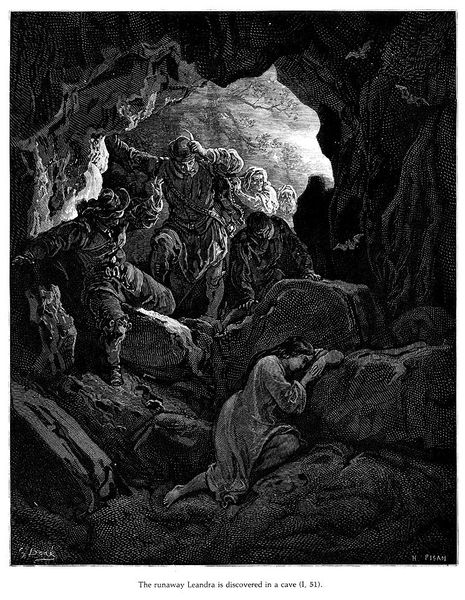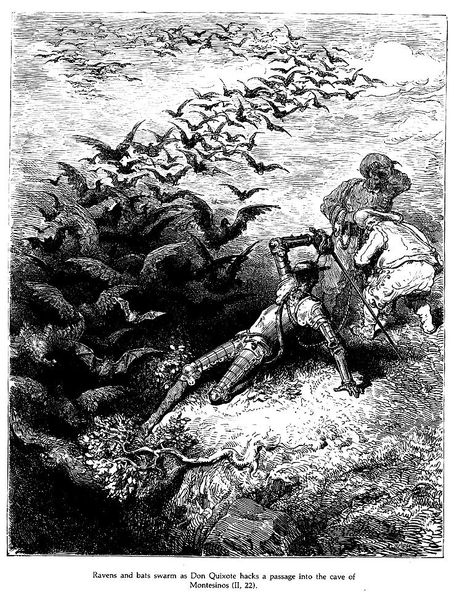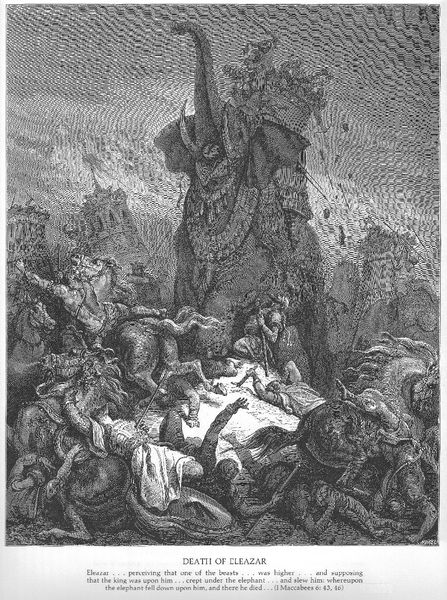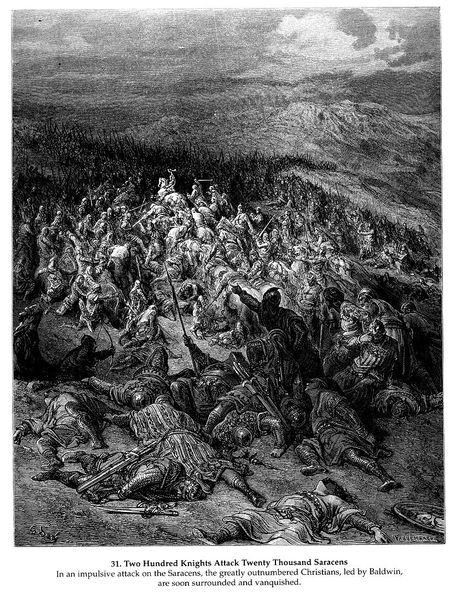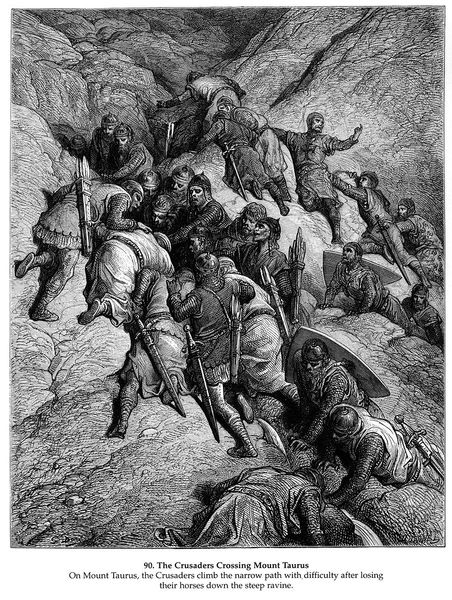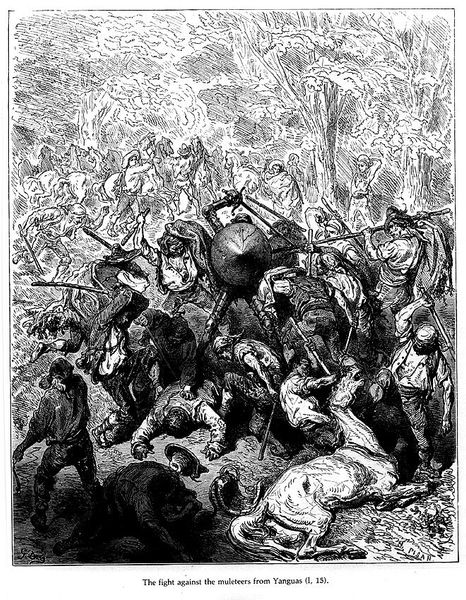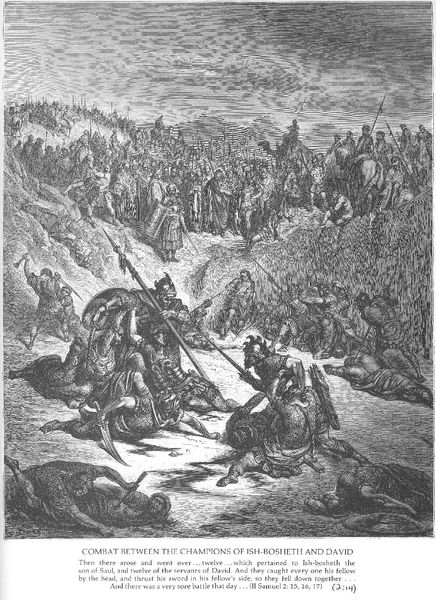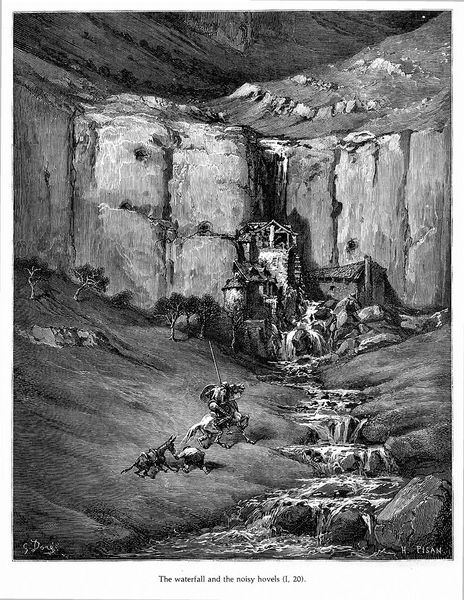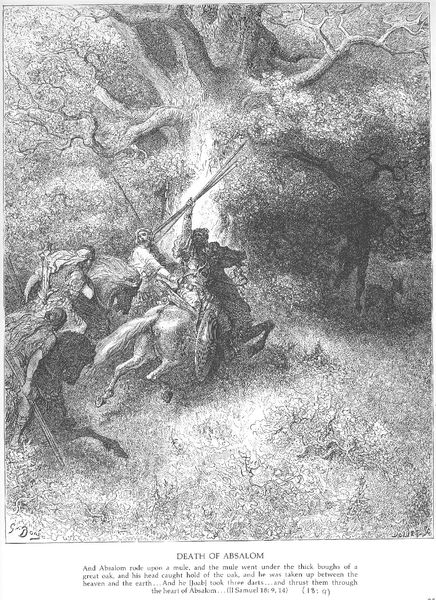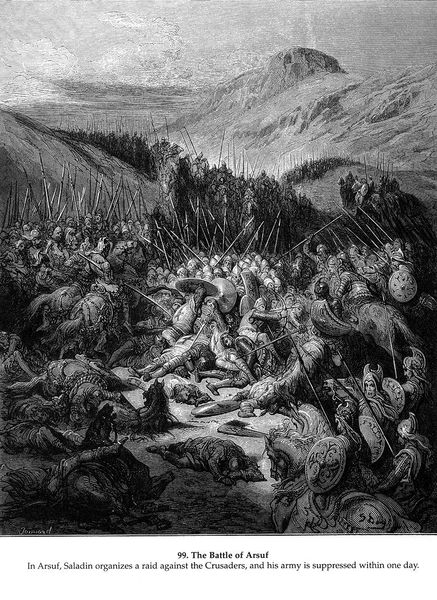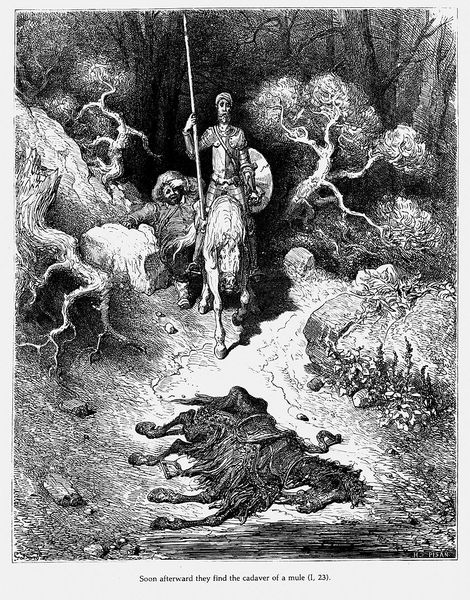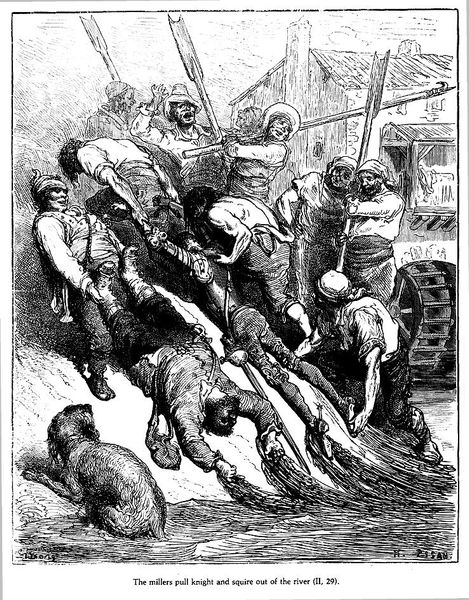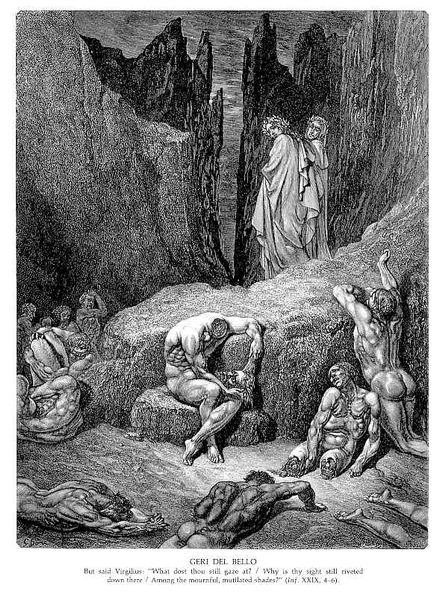
drawing, photography, ink, engraving
#
drawing
#
narrative-art
#
landscape
#
figuration
#
photography
#
ink
#
romanticism
#
history-painting
#
engraving
Copyright: Public domain
Editor: Here we have Gustave Dore’s "Don Quixote," an engraving with a really dramatic feel. The stark contrast between light and shadow is so intense. I'm curious about how to interpret this scene and its place in history. What stands out to you in this artwork? Curator: What immediately strikes me is the interplay between Romantic idealism, exemplified by Quixote's delusion, and the harsh social realities that existed during the rise of the printing press and illustrated books. Dore’s Quixote exists at the nexus of burgeoning literacy, and increased societal interest in both romantic tales, but also the satirical critiques of established power. Does the image convey a sense of triumph or critique to you? Editor: It feels like critique now that you mention it! The way the giants are kind of clumsily sprawled... and Don Quixote is still upright, heroic even, but seems almost detached from what’s really happening. Curator: Exactly. It’s a powerful commentary on the role of images and how they reinforce or subvert societal norms. Romanticism idealized the individual, often against society. Consider how mass media started to package and disseminate that idea through imagery to a broader audience. Would you say Dore here reinforces or deconstructs that romantic idealism? Editor: I see how it does both, now. Presenting the ideal, but also showing how it clashes, comically almost, with a much grimmer world. The image seems to hint at both belief and disbelief in heroism at the same time! I never thought about illustrations shaping political ideas like that before. Curator: Indeed, illustrations like these played a critical role in how these narratives were shared, interpreted and contested at the time. They were tools for shaping public opinion and understanding the changing world. Editor: That gives me a lot to think about when I look at other narrative art pieces! Curator: Absolutely, think of how illustrations functioned within a culture: not just for entertainment, but as potential commentary that helped define public thinking and push agendas.
Comments
No comments
Be the first to comment and join the conversation on the ultimate creative platform.
